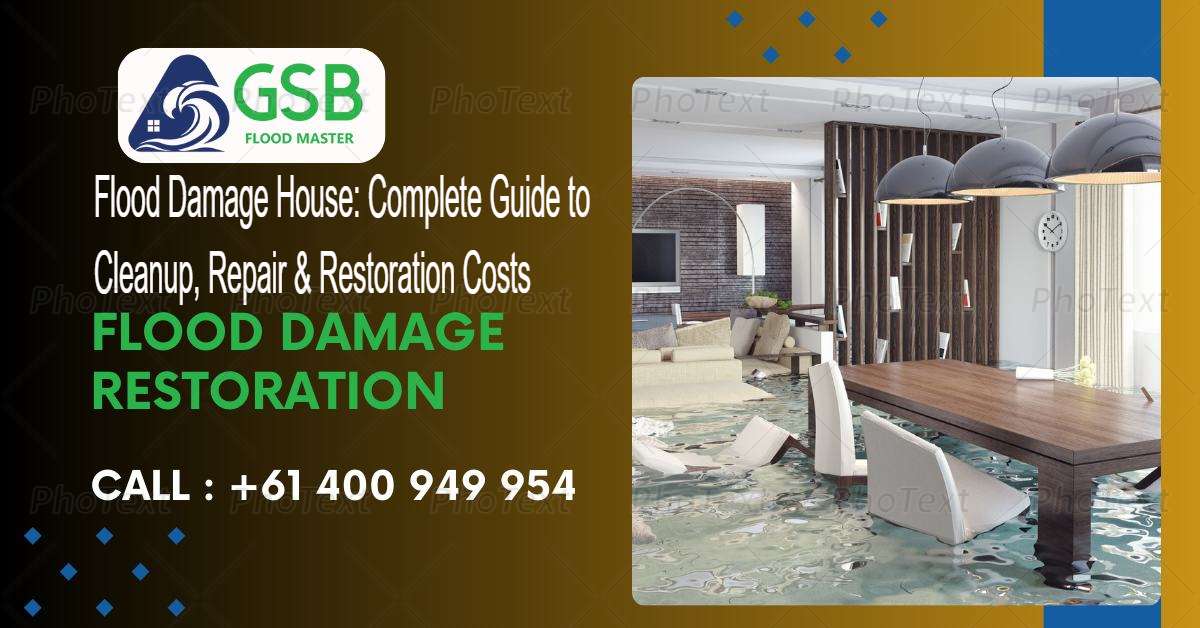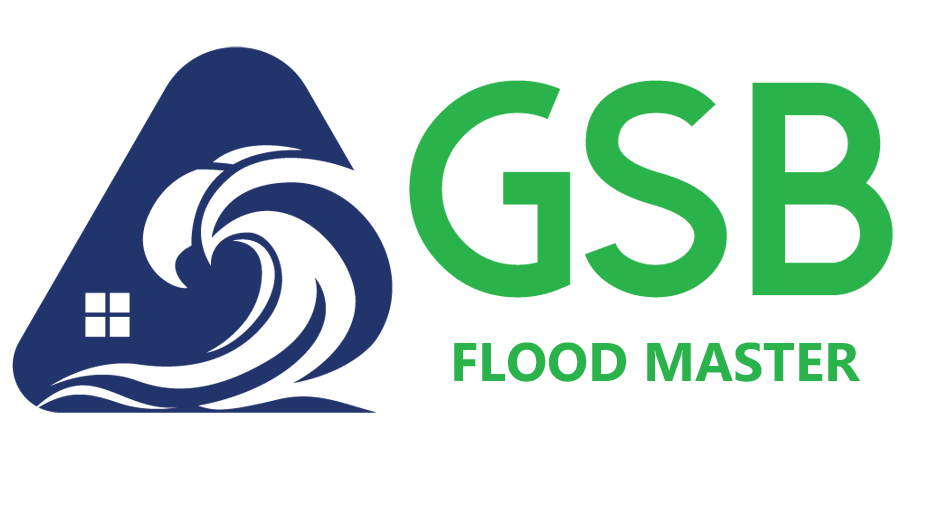
When a flood hits your home — whether from a burst pipe, storm surge, or stormwater backup — the first 24 hours are critical. Rapid, correct action not only limits structural damage and mould growth but also safeguards health and ensures support from insurers. In such situations, many rely on services like ours who provide water and flood damage restoration in Perth to respond quickly and begin the recovery process. If you live in Perth, here’s exactly what you need to do in those crucial first hours.
Step 1: Prioritize Safety First
- Turn off electricity and gas at the mains if it’s safe to enter.
- Watch for sagging ceilings, bulging walls, or sparks near outlets.
- If in doubt, stay out and wait for professionals.
Step 2: Stop the Source of Flooding
- Shut off the main water supply if plumbing failure caused the flood.
- Use sandbags or temporary barriers during storm flooding.
- Seal external openings to slow water entry.
Step 3: Document Damage for Insurance
- Take photos and videos of every affected area with timestamps.
- Keep a list of damaged belongings (furniture, carpets, electronics).
- Save receipts for emergency accommodation, supplies, or repairs.
Step 4: Remove Standing Water Quickly
- Use towels, buckets, or a wet-dry vacuum for small amounts of clean water.
- Open doors and windows for airflow if safe.
- If water levels are more than a few centimetres, call professionals immediately.
Step 5: Protect Belongings & Reduce Damage
- Move lightweight, dry items (books, toys, boxes) to higher ground.
- Avoid mopping drywall or carpets—this can trap moisture and grow mould.
- Do a quick room-by-room check:
- Basement: sump pump failure, cracks, soaked insulation.
- Living areas: damp carpets, warped flooring.
- Kitchen: water behind cabinets/appliances.
- Bathrooms: swollen vanity units, wet skirting boards.
- Attic/roof: sagging ceilings, damp insulation.
Step 6: Begin Safe DIY Cleanup (Small Areas Only)
DIY is possible only if the water was clean (burst pipe, not stormwater) and the area is small.
- Dry hard, non-porous surfaces with fans and dehumidifiers.
- Disinfect with a bleach solution or antimicrobial cleaner.
- Remove rugs, curtains, or soaked fabrics that can’t be dried.
- Monitor for mould smells over the next 7 days.
⚠️ Do not DIY if floodwater came from outside, multiple rooms are affected, or water remained for 24+ hours.
Step 7: Call Professionals for Severe Floods
Professional restoration is required when:
- Water is contaminated (stormwater or sewage).
- More than one room is affected.
- Electrical or structural safety is in doubt.
- Mould or hidden water damage is suspected.
Experts use industrial equipment for water extraction, drying, and sanitization—restoring your home safely and preventing long-term damage.
Flood Damage Repair Costs in 2025
Flood repair costs vary by severity:
| Damage Level | Typical Cost (AUD) |
|---|---|
| Minor (1 room) | $1,500 – $4,000 |
| Moderate (multiple rooms) | $5,000 – $12,000 |
| Severe (entire home) | $20,000 – $50,000+ |
Additional costs may include mould remediation, electrical rewiring, or temporary accommodation.
Preventing Future Flood Damage
While you can’t control every disaster, you can lower risks:
- Install sump pumps and backflow valves.
- Elevate appliances and electrical boxes above flood level.
- Clear gutters and drains regularly.
- Inspect roofs before storm season.
- Keep flood insurance updated annually.
Final Word
The first 24 hours after flooding decide whether your home recovers smoothly—or faces long-term issues. By following these 7 critical steps, documenting everything, and knowing when to call professionals, you’ll protect your safety, your property, and your finances.
Flood Damage House Recovery Timeline: What to Expect
- Week 1: Emergency response, water removal, drying.
- Weeks 2–4: Damage assessment, insurer inspection, materials quoting.
- Months 1–3: Repairs—flooring, cabinetry, rewiring, rewiring.
- 3+ months: Preventative upgrades and monitoring.
During recovery, many homeowners stay elsewhere. Your timeline depends on severity and availability of trades.
Protecting Your House Before Disaster
Be ready before water arrives:
- Fit backflow valves and utility alarms.
- Clear gutters before winter.
- Inspect roof and drainage each season.
- Elevate appliances and electrical boxes.
- Install sump pumps in basements or low spots.
- Check or upgrade flood insurance before June.
Quick prevention steps help you avoid serious damage later.
Professional Flood Damage Restoration Services: Choosing the Right Company
Choosing a trusted expert makes a difference. Look for:
- IICRC-certified, licensed teams with insurance.
- Written initial assessments and full quotes.
- Transparent timelines and contracts.
- References from other Perth homeowners.
- 24/7 availability and proven response times.
Avoid firms requesting full payment upfront or claiming unrealistic timelines.
GSB Flood Master ticks all boxes with verified credentials, local presence, and independent reviews.
Frequently Asked Questions
How much does flood damage cleanup cost in Perth?
Flood damage cleanup costs in Perth range from $1,800-$4,500 for minor damage (1 room), $6,000-$15,000 for moderate damage (multiple rooms), and $25,000-$65,000+ for severe whole-home damage. Costs depend on water category, affected area size, and restoration complexity.
How long does flood damage restoration take?
Flood damage restoration typically takes 1 week for emergency response and water removal, 2-4 weeks for damage assessment and insurance inspection, and 1-3 months for complete repairs including flooring, cabinetry, and electrical work. Timeline varies based on damage severity and contractor availability.
Can I clean up flood damage myself or do I need professionals?
DIY cleanup is only safe for clean water sources affecting under 1 square meter with no electrical involvement. Professional restoration is required for contaminated water (stormwater/sewage), multiple rooms, standing water over 24 hours, or any electrical system exposure. Perth’s humidity also increases mold risk, making professional drying crucial.
What should I do immediately after my house floods?
Immediately after flooding: 1) Cut power and gas if safe to do so, 2) Stop the water source and seal external openings, 3) Document everything with photos/videos, 4) Remove lightweight items to dry areas, 5) Call professional flood restoration services within 24 hours to prevent mold growth.
Does insurance cover flood damage restoration costs?
Standard home insurance in Western Australia typically excludes flood damage – separate flood insurance is required. Insurance may cover burst pipes or storm damage. Document all damage immediately, contact your insurer within 24 hours, and avoid starting repairs without approval to ensure claim acceptance.
How quickly does mold grow after flooding?
Mold can begin growing within 24-48 hours after flooding, especially in Perth’s humid climate. Immediate water extraction, dehumidification, and air circulation are critical. Remove wet carpets, drywall, and insulation quickly. Professional monitoring is recommended for 2-4 weeks post-flooding to prevent mold establishment.
